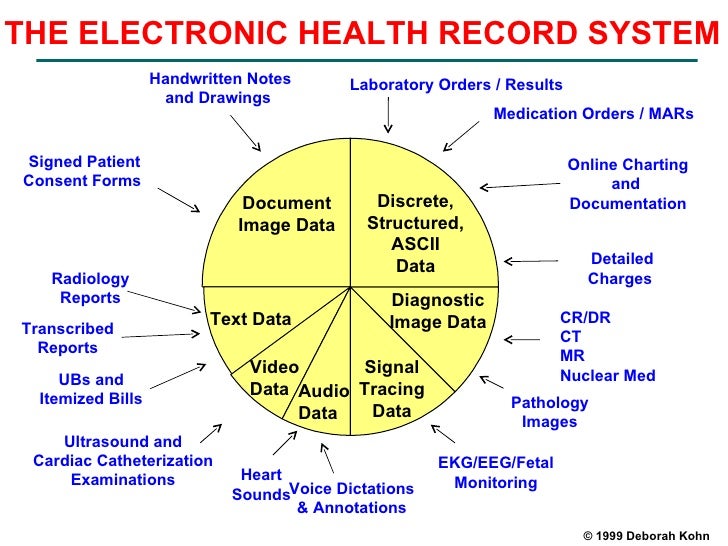Erm systems have been around since the late 1990s. for years, they integrated with leading document management systems. as electronic records increased, file plans, automated disposition of records and integration with archiving software became standard features of document management solutions. Records and information management professionals should be involved with the development and implementation of validated systems to ensure consistent intended performance, the ability to discern invalid or altered records, built-in retention management are characteristics of electronic records developed using the requirements found in part 11. A records management system (rms) is a system that captures, manages and provides access to records throughout time. an rms is designed to manage records and provides controls to manage retention schedules for the record’s lifecycle. Electronic records management (erm) is the management of electronic files and documents as records. the key difference between erm and the record management system electronic traditional records management of physical records is the focus. erm captures records as part of a digital business process.
Our electronic archiving software has been specifically developed by ags records management software engineers to meet the needs of our customers. it will allow you to consult your physical records and the image of your dematerialised document, via a simple interface.. ags records management software has been developed in the form of a web service; it adapts to all platforms and it requires no. As the tasks of hr departments intensify, so should the technical capabilities of the software solutions managed by every organization. efficient human resources management systems (hrms) work to help companies meet the constantly changing.
The responsibility for the daily management of electronic mail communications should fall on individual employees. determine the types of records created using electronic mail systems (for example, public, regulated, ferpa, student, financial, etc) and determine the retention period required for the records in each category. Electronic records management guidelineselectronic document management systems summary. an electronic document management system (edms) is a software program that manages the creation, storage and control of documents electronically. the primary function of an edms is to manage electronic information within an organization’s workflow. To be useful for research on small populations, ehrs much include information identifying individuals as fitting into those populations, record management system electronic as well as information about their health and health care. for example, even if members of an asian sub.
Types Of Management Information Systems Bizfluent
Records management applications (rmas) are considered to be software used by an organization to manage its records. the rma's primary management functions are categorizing and locating records and identifying records that are due for disposition. rma software also locates, retrieves, and disposes of the electronic records that are stored in a repository through integration with relevant core edms functions. any rma must have at least one core edms component. Electronicrecordsmanagement (erm) ensures your organization has the records it needs when they are needed. records management refers to a set of activities required for systematically controlling the creation, distribution, use, maintenance, and disposition of recorded information maintained as evidence of business activities and transactions. In california, this happens when the electronic records management software is a trusted system. a trusted system must: utilize both hardware and media storage methodologies to prevent unauthorized additions, modifications or deletions during the approved life cycle of the stored information.

Records management in microsoft 365 helps an organization manage their legal obligations, provides the ability to demonstrate compliance with regulations, and increases efficiency with regular disposition of items that are no longer required to be retained, no longer of value, or no longer required for business purposes. leading us to improved efficiency by implementing an electronic medical record management system called epic, which puts patients’ histories at doctors’ Records inventory & classification: the start of any good records management program, whether one is going to develop their own records retention schedule or as the case here at osu where one is applying existing retention schedules, one has to know what records they have and are responsible for. to this end one conducts a records inventory, that is a complete and accurate listing of their. Electronic records management (erm) software simplifies the application of this strategy, helping to manage the life cycle of business records without interfering with your line of business. a records management application supports the automatic enforcement of consistent, organization-wide records policies, simplifying compliance with federal, state and industry regulations.
Types Of Records Management Systems Bizfluent
Use. electronic document and records management is used by organizations to manage documents and records throughout the document life-cycle, from creation to destruction.. typically, systems consider a document or file to be a work-in-progress until it has undergone review, approval, lock-down, and (potentially) publication, where it will wait to be used. Whether you have a paper or electronic records management system, it’s essential to track records throughout their life cycle as evidence of their existence. the tracking of records permits your staff to know when and how to apply retention rules, such record management system electronic as legal hold or destruction. 4) enables business continuity. and delivery of care our provider solutions include electronic health records, practice management systems, billing, demographics, and an appointment scheduling system for An electronic document and record management system (edrms) allows you to organize unstructured records and information. here are the benefits of using one.
Technology is also making a simple matter of difficulty. for example, in the management of their own records. records management repositories, archives or organization, there are a number of difficulties to manage it in a better way. but, nowadays, electronic records have been created and used to manage it in a good way. Electronic records and their management have transformed how organizations collect, organize, and use a variety of information formats in any organization, not only pharmaceutical, biotechnology, and medical companies. introduction. the united states food and drug administration (fda) established regulations for electronic records and signatures in title 21 cfr part 11 of the code of federal regulations.
Records Management In Microsoft 365 Microsoft 365
An edrms is a process which organizations use to organize all important information in one central location. organizations often use an edrms (also referred to as an electronic document management. Our pick for the best free document management solutions in 2020 is vienna advantage community. it has a user-friendly interface and highly effective tools. product and service reviews are conducted independently by our editorial team, but. Electronic records management [erm] is using automated techniques to manage records regardless of format. electronic records management is record management system electronic the broadest term that refers to electronically managing records on varied formats, be they electronic, paper, microform, etc. electronic recordkeeping [erk] is a subset of erm, because erk focuses on.

Electronic Records Management Division Hud Gov U S Department Of Housing And Urban Development Hud


Records management is a systematic, organized, planned and controlled process of managing or tracking the life cycle of records. a record record management system electronic can be a tangible paper object or it can be in electronic form. records can be kept on financial, medi.
Electronic records: definition, principles, and applications.
Records management is an administrative function that maintains an organization's records. it includes the management of records through retention policies, classification, storage, preservation and destruction. a record can be tangible, su. The core feature of a records management system. includes basic functions, such as scanning, duplicating, sending and saving, as well as more advanced functions, such as automation based on a company’s retention and classification policies. Press room program offices resources contact us informacin en espaol hud rim policy 2200 hud rim policy cui 2200. 1 hud rim handbook 2228. 1 basic laws and authorities regulations nara bulletins grs (general records schedules) hud 2225. 6 inve. Companies that are looking for ways to experience less waste and better productivity would benefit from the use of a quality management system (qms). however, some companies have difficulty implementing them due to the complexity of these s.